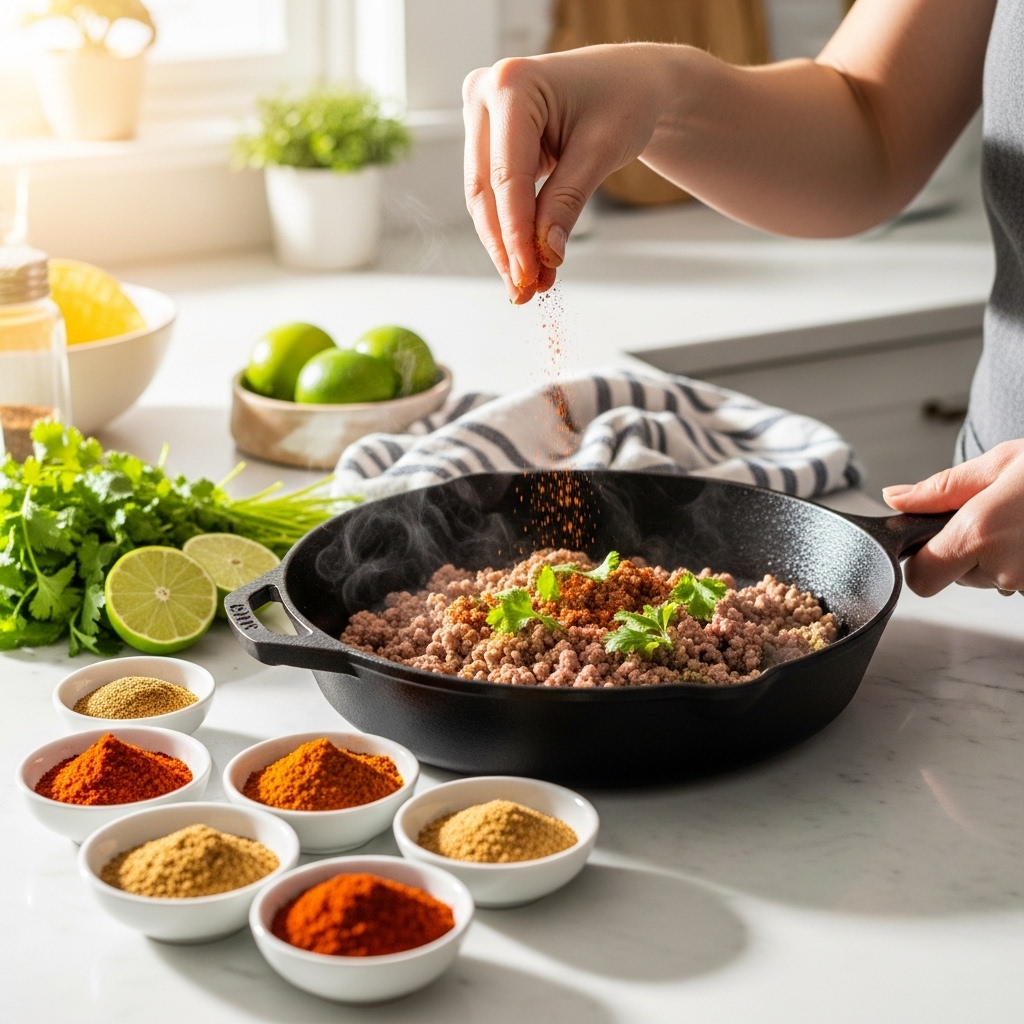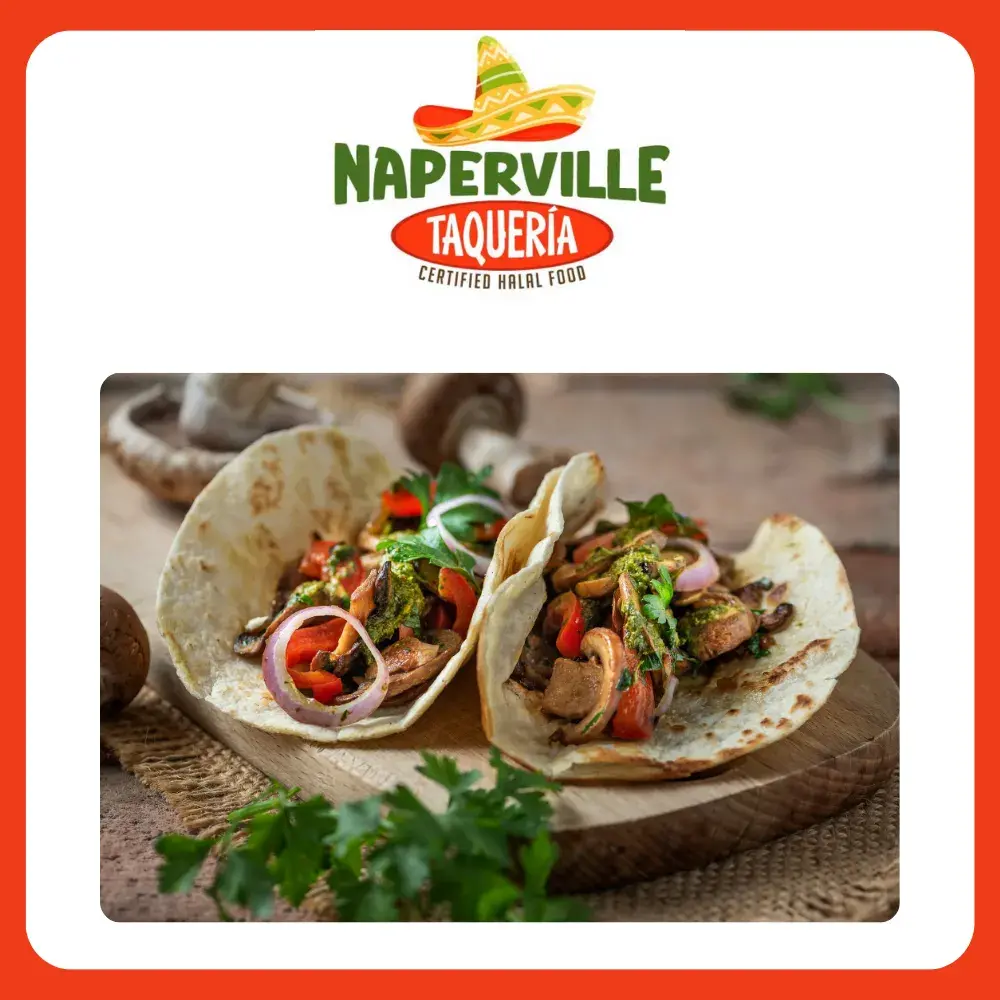The best taco seasoning does more than add heat; it creates balance, draws out natural savoriness, and amplifies freshness. In Naperville, Illinois, you can taste this balance across a range of tacos—from smoky grilled meats to bright vegetarian fillings layered with citrus and herbs. This guide distills those lessons into a flexible, home-cook-friendly seasoning approach you can tailor to your pantry and preferences. For inspiration as you build flavor profiles, glance at a Naperville taco menu and note how different fillings pair with particular salsas and garnishes.
The Flavor Map: Heat, Earth, Citrus, and Sweetness
Great taco seasoning usually rides four rails: heat, earthy depth, citrus brightness, and a touch of sweetness to round edges. Heat may come from chili powders or crushed chiles. Earthy depth builds through cumin, coriander, and sometimes a hint of cocoa or coffee for background bitterness. Citrus brightness can be literal—zest or dried citrus peel—or it can be coaxed via vinegar and fresh lime at serving. Subtle sweetness often emerges naturally from caramelized onions or a pinch of sugar that helps spices bloom during a quick toast in oil.
Your goal is not to taste any single element in isolation but to create a chord. In Naperville’s tacos, you will often encounter layered heat that grows without overwhelming, a roasted backbone that suggests griddle or flame, and a finishing pop of acidity. Home seasoning can deliver that same arc if you design it with intention.
Core Spices and What They Do
Chili powder is a broad term; choose blends that lean toward ancho, guajillo, or New Mexico chiles for deep, fruity warmth rather than blunt heat. Smoked paprika provides gentle smokiness akin to griddle-seared edges, while regular paprika offers sweeter pepper notes. Cumin supplies earthy warmth and an unmistakable taco aroma, but too much can dominate, so measure with restraint. Coriander adds citrusy lift, bridging the gap between earthy spices and fresh lime you squeeze at the end.
Garlic and onion powders bring consistent savory depth, filling in the spaces between spice peaks. Mexican oregano contributes a floral, slightly minty note distinct from Mediterranean oregano, making tacos feel brighter and more complex. A pinch of cocoa powder or finely ground espresso can deepen color and enhance perceived savoriness without announcing itself as chocolate or coffee.
Salt Strategy and Timing
Salt is not just a seasoning; it is a tool. For meats, apply salt early to help proteins retain moisture. If you are seasoning vegetables or beans, salt in stages—some during cooking to build flavor and a final sprinkle right before serving to amplify brightness. If your spice blend already contains salt, dial back added salt accordingly; you want control so that the final dish sings rather than shouts.
For stews and braises, a lower-salt spice mix gives you flexibility, especially if you will reduce cooking liquid. For quick-seared tacos, a slightly saltier rub can help form a seasoned crust in minimal time.
Building a Versatile Base Blend
Start with a simple ratio that you can scale. Think in parts, not grams, so you can adjust on the fly. A dependable base might be two parts chili powder, one part smoked paprika, one part cumin, one part garlic powder, one part onion powder, half a part coriander, and a generous pinch of Mexican oregano. Add fine salt to taste, or keep it separate to maintain control. Whisk thoroughly to ensure even distribution and store in a small jar away from light and heat.
From there, tune for your preferences. If you want gentle heat that builds, add a pinch of cayenne. For a richer color and backbone, increase smoked paprika. If you crave brightness, add ground coriander or a touch of dried lime zest. A whisper of cocoa deepens the roastiness without crossing into dessert territory.
Toasting and Blooming Spices
Spices wake up with heat and fat. If you are making a quick skillet taco filling, warm a teaspoon or two of oil and briefly bloom your seasoning until fragrant—just 20 to 30 seconds. Add your protein or vegetables immediately to avoid burning. For braises, toast the spices in oil after you sweat onions and garlic, then add liquid to carry those flavors through the dish.
Beware of burning spices; bitterness can creep in fast. Keep the heat moderate and move quickly. If your kitchen smells intensely smoky and the pan looks dry, pull it off the heat and add your main ingredients to cool things down.
Seasoning by Filling Type
Grilled meats respond well to a slightly coarser, drier rub with a hint of sugar for caramelization. For quick-seared chicken thighs or skirt steak, pat the meat dry, rub generously, and let it rest for ten to twenty minutes before cooking. For slow-cooked pork shoulder or beef chuck destined for shredding, work the seasoning into every surface and add a bay leaf and a splash of vinegar or orange juice to the braise.
Seafood likes a lighter hand. Opt for a delicate mix heavy on coriander and paprika, with minimal cumin to avoid masking the fish. A quick dusting and a hot griddle are enough; you are aiming for gentle browning and a tender interior. For vegetables, lean on smoked paprika for depth and cumin for warmth, then finish with lime and a crisp slaw to bring crunch and freshness to the plate.
Acidity and Fresh Finishes
Lime is your secret weapon. Even a well-seasoned filling feels incomplete until it gets a kiss of acid right before serving. Keep wedges on hand and encourage generous squeezes. Fresh herbs like cilantro add aromatic lift that no dried spice can replicate. Diced onion and radish provide crunch and help reset your palate between bites.
If you prefer a dairy finish, a drizzle of crema can round off heat, but balancing with acidity is still essential. For dairy-free richness, avocado slices or a smooth avocado salsa add body without muting brightness.
Managing Heat Without Losing Nuance
Heat should be a storyline, not a jump scare. Use cayenne or crushed red pepper sparingly and consider layering heat with different chile powders. Ancho for warmth and fruit, guajillo for gentle brightness, and arbol for a sharper kick can combine into a dynamic, evolving heat profile. Taste as you go, and remember that toppings—especially acidic salsas—will increase perceived brightness and can make a moderately spicy filling feel perfectly balanced.
Tortillas, Texture, and Carrying Power
Even the best seasoning needs the right delivery system. Warm corn tortillas bring masa aroma and a gentle chew that supports juicy fillings. Flour tortillas offer softness and bend, particularly helpful for grilled meats. Toast tortillas briefly on a dry skillet until pliable and speckled, then keep them warm wrapped in a towel. If your filling is saucy, double up on corn tortillas to prevent tearing and keep bites tidy.
Practice: A Simple All-Purpose Seasoning
Try this approach the next time tacos are on the menu. Combine two parts chili powder with one part smoked paprika, one part cumin, one part garlic powder, half a part onion powder, half a part coriander, and a pinch of Mexican oregano. Add a conservative amount of salt, taste, and adjust. For ground meat or chopped mushrooms, bloom the spices in oil, then cook your main ingredient until browned and aromatic. Finish with lime, cilantro, and a vibrant salsa to showcase the seasoning’s balance.
As you iterate, keep notes. If a batch feels flat, increase coriander and add a splash of vinegar or more lime at the end. If it tastes too earthy, pull back on cumin and reach for paprika to restore brightness. If the color is pale, add a bit more paprika or a tiny pinch of cocoa for depth.
Drawing Inspiration from Local Menus
Naperville’s restaurants offer a living laboratory of flavor combinations. Compare how different places pair grilled meats with salsas: a citrusy verde against carne asada, or a smokier roja with carnitas. Notice how vegetarian tacos leverage mushrooms, peppers, or beans for umami and texture. During your planning, scan a reference like a Naperville taco menu to identify themes—do grilled proteins lean smoky or citrusy, and how do garnishes push a profile toward brightness or comfort?
Scaling Up for Gatherings
If you are cooking for a crowd, mix a larger batch of seasoning and keep it unsalted so you can tailor the final dish. Prepare multiple fillings with distinct identities: a citrus-forward chicken, a deeper, spicier carnitas, and a mushroom-and-rajas option for variety. Offer lime wedges, chopped onions, cilantro, and a couple of salsas at different heat levels so guests can calibrate their plates.
For make-ahead efficiency, cook fillings a day early and reheat gently. Season lightly during cooking, taste after warming, and adjust at the end. This approach preserves brightness and prevents overseasoning.
Troubleshooting Common Issues
If your taco filling tastes dull, you may need acid or salt rather than more spice. Try a squeeze of lime and a small pinch of salt, then reassess. If bitterness creeps in, you may have scorched the spices—add a bit of sweetness via caramelized onions or a touch of tomato, and lower the heat next time. If a mix is one-note hot, balance with fruitier chile powders or add a creamy element like avocado salsa to soften the attack.
Frequently Asked Questions
Q: Can I make taco seasoning without chili powder?
A: Yes. Combine paprika, a touch of cayenne for heat, cumin, coriander, garlic powder, and Mexican oregano. You will lose some of the nuanced fruitiness of dried chiles like ancho, but you can still build a balanced profile.
Q: How long does homemade seasoning keep?
A: Stored in a sealed jar away from light and heat, it remains vibrant for a couple of months. Expect gradual fading of aroma over time; small batches help maintain freshness.
Q: Should I salt my seasoning mix or add salt separately?
A: If you want maximum control—especially for braises—keep salt separate. For quick weeknight cooking, a lightly salted mix simplifies prep. Choose based on how you usually cook.
Q: How do I adjust seasoning for seafood?
A: Go lighter on cumin, lean into coriander and paprika, and season gently. Seafood needs less time in contact with spices; a quick dusting before a hot sear is plenty.
Q: What is the best way to avoid bitter, burnt spice flavors?
A: Bloom spices briefly in oil over moderate heat and add your main ingredient before they darken. If the pan looks dry or smoky, lower the heat and move quickly.
Q: Can I use the same seasoning for vegetarian tacos?
A: Absolutely. The same base works beautifully with mushrooms, squash, peppers, or beans. Adjust salt and finish with lime and fresh herbs to brighten.
Q: How do I know if I need more acid or more salt?
A: If flavors feel muted but present, try a small pinch of salt. If the dish feels heavy or flat, reach for lime or a splash of vinegar to lift the profile.
Q: What tortillas pair best with a spicier filling?
A: Corn tortillas add structure and a toasty masa note that complements higher heat. Flour can soften the impression of spice, which some diners prefer.
Bring It All Together
Seasoning is a framework, not a fixed recipe. Start with a versatile base, toast it to wake the aromatics, and adjust with acid and salt right before serving. When you want new ideas for pairings or to test how different fillings might showcase your spice blend, consult a Naperville taco menu, then return to your kitchen and fine-tune. With a little practice, your home tacos will echo the balance and brightness that make Naperville’s favorites so memorable.







